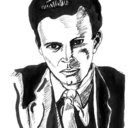Cast: Jake Gyllenhaal, Michelle Monaghan, Vera Farmiga, Jeffrey Wright
I won’t mince words: Duncan Jones’ Source Code is a poor film and a disappointing follow up to his debut feature Moon. Where the latter was stylish and striking, the former is muddled, over-bearing, and obvious. I will give you a synopsis and some thoughts, but only because I feel compelled to do so (it is my default setting), and not because the film is worth discussing or arguing over.
Sean Fentress is on his way to work on his usual Chicago commuter train, with the same people he sees every day, and the same pretty friend, Cristina (Monaghan), that he always manoeuvres himself to sit opposite. But for some reason Sean cant remember a thing about his life: he doesn’t have a clue who all these people are, and he thinks he should be flying a helicopter in the Gulf. Is he mad? No. He is actually Colter Stevens (Gyllenhaal), a helicopter pilot for the US air force.
Stevens has been drafted into a new Top Secret military intelligence programme – Source Code – that manipulates brainwaves, allowing specially selected soldiers to inhabit the bodies of people who have recently passed away. Sean Fentress, along with Cristina and everybody else on the train, died when a terrorist bomb exploded onboard; but it was only a calling card for an unstoppable atrocity planned for downtown Chicago later in the day. Stevens is forced to relive the final 8 minutes of Fentress’ life over and over again until he finds the bomb and reveals the identity of the terrorists. But this is no easy task when he is also trying to find out what has happened to his own body (why isn’t he still flying a helicopter?) and falling in love with Cristina despite being told repeatedly by his superiors that he is only reliving a memory, and she is already dead.
Doesn’t that sound exhilarating? Doesn’t that sound like it could be spun out into an extraordinary psychological action thriller that would have Inception fans prolapsing all over the cinema? Well that may be the case, but the answers to all these exciting premises are as dull and disappointing as you could possibly imagine. As you read my little teaser, your 21st Century brain was registering the most obvious resolutions and dismissing them out of hand, because nobody makes thrillers without interesting twists anymore, right? Well Duncan Jones does, and if you rifle through the waste bin in your brain and find those obvious, boring answers, you will have just spoiled the ending of the film for yourself.
Admittedly, the first half hour of the film, before we begin to worry about where it is all going, is perfectly enjoyable. The basic structure of reliving the same 8 minutes is fairly exhilarating; and it is interesting to feel real anxiety, rather than just suspense, at the knowledge that your hero is going to blow up again in a few minutes. At first the subtle tweaks to the aesthetics and foundations of each replay ensure that the story doesn’t feel stagnant or repetitive; and Jake Gyllenhaal’s “watchability” manages to Spackle over any remaining cracks or worries.
But if you are sitting in the cinema waiting for the terrorist plot to escalate into some electrifying ‘Michael Bay’ catastrophe, while also shaking with anticipation at the thought of some Aronofsky/ Lynch psychological conspiracy thriller… then I just feel sorry for you. The terrorist plot is gallingly, almost offensively, simple; and the psychological element is half-baked and thoughtless. After the masterful consideration and patience of Moon, it seems that Jones has chased the stars and forgotten the gruelling hours of development needed to ensure a truly engaging thriller.
During the climax of the film, as Stevens and Cristina stare at all the naïve faces around the train carriage, Colter remarks, “look at all this life”, and Cristina suggests that if she knew she only had a minute to live, “she would make every second count.” I didn’t cringe, but only because my face was frozen into a mask of incredulity. Where did all the early promise go? How could a collection of talented filmmakers with a decent budget fail so completely to create a film that was in any way interesting or watchable?
To add insult to injury, Jones has also completely reneged on his artistic responsibility to find a cohesive visual framework through which to portray his vision. Moon was a Sci-Fi gem, harking back to the classics of the genre but subverting and invigorating them with new life. It was an astoundingly beautiful fugue to Solaris and Space Odyssey, and it marked the arrival of a new composer of light and images. Source Code has no integrity, no passion, no courage, and no patience. It is a pile of drivel, and surely Jones knows it.









